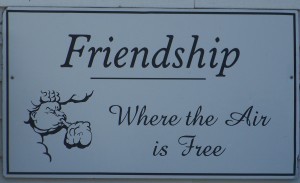Lea Wait's Blog, page 283
August 24, 2015
Stiffing Clyde
“Ayup, scared the poor booger half to death. it’s bad enough the kid has to freeze his butt delivering papers with the wind chill at minus 40, but to come upon Clyde like that. I’d be surprised if he ever delivers another newspaper.” I knew I was having trouble being heard. Between the whirling emotions coursing through me and the keening of a bitter Sunday morning wind outside, it wasn’t easy. I said goodbye to my cousin Phil and willed my shaking hand to set the phone back in its cradle.
I watched crime scene tape slapping in the fierce wind out by my mailbox as I drank a third cup of badly brewed coffee and remembered the scene a scant three hours earlier. The paperboy had come upon my best friend Clyde Randall leaning against the post, clad in a tattered sweatshirt and equally tattered jeans, holding a half empty bottle of Old Rose whiskey. Both he and the contents of the bottle were frozen solid. I had wondered briefly why Clyde had been out in such weather dressed like that, before giving in to a monumental sense of loss as I dialed 911.
The sheriff’s deputy and the medical examiner had borrowed a kettle of hot water to help free Clyde’s body from the iron box that was holding it in an unforgiving grip. Neither had attempted to do the same with the bottle clutched by his solidly frozen left hand. Somehow that seemed perfectly appropriate in a bizarre way. Later today, after I had finished recovering from the shock and had gone through my own private grief, I’d have to brave the elements and make a formal identification at the county courthouse. I knew I’d also have to make funeral arrangements but I wasn’t up to it at the moment.
I filled the pellet stove and stared out the living room window as I heard the familiar uptake of the auger followed by the whine of the blower motor, forcing frigid air through the newly deposited pellets. The burst of warm air behind me was a small, but welcome comfort as I watched snow devils chase each other across the icy surface at the foot of the hill. Clyde and I had pretty much lived on and in Simonton Pond when we were growing up. With his father long gone and his mother having to work two jobs in order to support three kids, Clyde was informally adopted by my parents, even to having his own room next to mine upstairs in this house.
We had done everything together, hunting, fishing, stealing apples from the neighboring orchard, even double-dated through high school. Clyde hadn’t been a very good student and when we graduated back in 1969, I went to college and he got a job as a welder’s apprentice at Bath Iron Works. He had a natural aptitude for working with metal and completed the training program two months ahead of schedule. That, coupled with an engagement to a girl from East Prospect, had his future looking really bright while I struggled with classes of 200 and a deceptively inviting social scene. By Christmas time, we were headed in different directions; Clyde was headed down rose lane, while I was on the thin edge of flunking out and disappointing my parents.
How quickly things can change when you least expect them. By Valentine’s Day, I was maintaining a B average and had escaped the party scene while Clyde had been drafted over protests by Bath Iron Works management that he was essential to the war effort as a welder. He thought briefly about joining the coast guard, but his hesitation cost him as the quota for the month filled up in a heartbeat. By April Fools Day, he was in Texas halfway through basic training.
The summer of 1970 was gloomy in more ways than one. I was working as a bridge painter, but fog and rain limited us to three days or less per week. News from Clyde matched the weather. Despite his welding skills, the army had sent him to infantry school and he would be shipping to Vietnam shortly after Labor Day. Matters were compounded when his wife to be got cold feet and broke the engagement long distance. I didn’t hear from Clyde for almost four months. As his tour crept toward an end, his letters became shorter and bleaker. He kept referring to events that he said were beyond belief or description and had him seeking refuge in whatever the mind numbing substance of the day happened to be. I felt completely helpless and even a bit guilty because my life at the university was really good.
After he was discharged, Clyde didn’t come back to Maine right away. BIW was required to keep his job open for six months and he said he needed time away from home to see if he could exorcise the devils who had taken up residence in his head. He was living in a commune outside of Sacramento, California.
I barely recognized the animated skeleton who knocked on my door one night in October. Clyde looked like Charlie Manson with Jesus eyes. He was shaky and wouldn’t look at me. I let him smoke a couple joints on the back porch while I wondered if I was in any position to help him. Quite honestly, I wasn’t sure and that hurt a lot.
Over the next six hours, he rambled, sometimes incoherently sometimes with frightening clarity, about things he had seen and things he thought he should have prevented from happening in remote Vietnamese villages. His mental body count was horrifying. I did my best to reassure him that it wasn’t his fault, but I might as well been trying to reverse the flow of a glacier.
After a stay at the V.A. hospital, Clyde started attending AA meetings and went back to work as a welder. Neither effort was successful. Almost every time sparks started flying when he welded, Clyde flashed back to nighttime scenes of tracer bullets ripping through villages and body parts would fly at him from all directions. He couldn’t take it without some form of emotional anesthesia and failed three drug tests. The iron works did everything they could to help him, trying Clyde in several different jobs, but the internal damage was too severe. He was let go while on another stint at the V.A. hospital.
The army, always a good enabler, assessed his combat-related disability at 80%, ensuring that he wouldn’t have to work, but still have enough income to feed his addiction. Clyde supplemented the pension by doing odd jobs and picking the roadsides for returnable cans and bottles.
I watched helplessly over the next twenty-five years as Clyde retreated a bit further every day, trying to find a place where the demons couldn’t hurt him. He always had a place to crash at the farm as I kept his room available. Sometimes, he’d hole up there for days at, staring at nothing until I roused him for a meal. Other times, he’d vanish for weeks at a time, always returning, never talking about where he went or what he did. I came to accept that someday, Clyde would disappear for good, either physically or spiritually. Today was that day. Even though he had been like a ghost for years, I knew the hole in my spirit would take a long time to heal.
I shrugged on my coat and grabbed my car keys. Better to get busy making final plans for Clyde than sitting around playing the what-if game. As I turned toward town, I could swear I saw Clyde’s ghost leaning against the mailbox post, a look of peace finally spreading across his face.
*********************************************************************************
I wrote this several years ago when I couldn’t get a conversation I had with a guy who was AWOL from the army back in 1969 out of my head. We were pretty hammered in one of the Mill Avenue dives I frequented and he had no place to sleep, so I brought him back to the fraternity house I was living in and he slept on a couch in the living room. Before we crashed, he talked at length about why he wasn’t going back and how many horror stories were locked in his head.
I never saw him again and didn’t get his name, but I see his brothers at AA meetings every week, many of them the fortunate victims of war because they were able to meet their demons in ways that got them clean and sober. Even so, most of them are still experiencing the same things that my Clyde did. War is a nasty, evil and terrible thing to inflict on spiritual beings.
August 21, 2015
Weekend Update: August 22-23, 2015
 Next week at Maine Crime Writers there will be posts by John Clark (Monday), Jessie Crockett (Tuesday), Kathy Lynn Emerson/Kaitlyn Dunnett (Wednesday), Kate Flora (Thursday) and Chris Holm (Friday).
Next week at Maine Crime Writers there will be posts by John Clark (Monday), Jessie Crockett (Tuesday), Kathy Lynn Emerson/Kaitlyn Dunnett (Wednesday), Kate Flora (Thursday) and Chris Holm (Friday).
In the news department, here’s what’s happening with some of us who blog regularly at Maine Crime Writers:
from Kathy Lynn Emerson: Now that the October issue of Alfred Hitchcock Mystery Magazine is in stores, you can read the first part of my short story, “The Cunning Woman” online. Unfortunately, you still have to buy the magazine to read the whole thing, but hey—I’m hoping to tempt you!
Lea Wait: Excited that the second in my Mainely Needlepoint series, Threads of Evidence, will ship early next week! And that Saturday, August 22, Maureen Milliken and I will be selling and signing our books at the 9th annual art and craft show at Longfellow’s Green house in Manchester, Maine, from 9:30 am until 4:30 pm. The others exhibiting (and selling their crafts!) are all fantastic women crafters, and the event (which will be held rain or shine) will benefit a nonprofit Sexual Assault Crisis Line.
An invitation to readers of this blog: Do you have news relating to Maine, Crime, or Writing? We’d love to hear from you. Just comment below to share.
And a reminder: If your library, school, or organization is looking for a speaker, we are often available to talk about the writing process, research, where we get our ideas, and other mysteries of the business. Contact Kate Flora: mailto: kateflora@gmail.com
August 20, 2015
What’s in a Name?
Hi. Barb here. Sitting on the porch in Boothbay Harbor enjoying a lovely breeze and a lovely view.
Every year I have a little task I perform for Level Best Books. Our contract with authors asks two questions:
Your name as you wish it to appear in print:
Your story’s title:
So my little task is, I look at the copyright page, the table of contents, the front page of every story and every author’s bio, and I make sure all the author names and story titles match the contracts.
You’d think this would be a simple job, a “no brainer” almost, resulting in few changes, wouldn’t you?
But instead, it often results in a manuscript with so much red ink it looks like it was in a knife fight.
Authors forget their names all the time.
Authors may want their byline to be a formal name (with or without a middle name or initial), a nickname, initials instead of a first and middle name, or a pseudonym. Often, much thought has gone into this choice. They may wish to disguise their gender, or use a different name for short stories than for their novels. Or they may share a legal name with a well-known author or a celebrity from whom they must distinguish themselves.
Yet, authors routinely forget all this and provide one variation on their name in their story byline, a different one in their bio, and a third in the contract.
A rose by any other name…
This is ironic because for crime fiction authors, Author name = Brand equity. Once we have any sort of a fan base, our name is the most important thing we have.
Here is a tiny look at the Thriller Author Audience Expansion Roadmap, presented in January 2014 and commissioned by the International Thriller Writers organization.
# 1 determinant of Thriller* bestseller success, by far – Author Brand Equity – the size and loyalty of an author’s audience.
Fiction author fans are at least 15 TIMES more likely to buy a given fiction title than a book buyer not familiar with the title’s author.
*Thriller=Thriller, Suspense, Mystery, Romantic Suspense
The author name = brand equity concept is true for all authors, but is even truer for crime fiction authors, because our audience is even more apt to choose books by authors they love than the readers of other types of books are–literary fiction, narrative non-fiction, etc.
So getting your name right would appear to be job one.
So why do the authors I follow use so many different names?
Sometimes I say, “All my friends are like drag queens. They all have at least two names.”
The reasons authors publish under different names are varied.
1) They may write in more than one genre, and be concerned that readers of one type of book will be unhappy if they pick up the other type based on author name.
2) Their publishing contract may prohibit publishing other books under the same author name–even it if is their legal name. My contract actually says this, and I am told the rationale is that the publisher is spending time and money building my brand and don’t want me to go out and squander it by publishing something terrible. They also don’t want some other publisher taking advantage of my brand equity–equity they have contributed to building. For me, this is the most irksome clause in my contract.
3) The work may be “work for hire.” With work for hire, the publisher hires you to write a book they want. They retain the author name, and can hire someone else to write subsequent books in the series if they wish to. Since no one wants to end up in a situation where a publisher owns his legal name, these books are almost always written pseudonymously.
4) The author’s prior books may have under-performed. So supposedly (and I say supposedly because I have no independent way to confirm this–but I have been told it over and over [There is enough myth and legend in publishing to create a new set of Arthurian tales]) book buyers at Barnes and Noble and other chains, like Costco and Walmart, buy books based on the author’s past performance. So a publisher may suggest to an author who is starting a new series, or who has written a potential “break-out book” that they use a different name. Because having no track record is better than having a modest one, apparently.
However, in this day and age, when authors are urged to have a social media presence and cultivate fans, the B&N buyer may be the only person on the planet who is fooled by this second name ruse.
A confession…
So far, all my books and short stories have been published under my legal name, Barbara Ross. This is more a testament to the immature nature of my publishing career than anything else.
But, otherwise I am as guilty as all those Level Best authors. On this blog, I routinely post and comment as “Barb” even though my author name–i.e. my brand–is “Barbara.”
Why do I do this? I have no idea. In real life, when people ask, “Are you called Barb or Barbara?” I answer, “Either,” though the truth is closer to, “I have no idea.” I think when my name is spoken, my brain hears something akin to “Hey, you!” and processes neither Barb nor Barbara (nor honey, Mom, or any of the dozens of nicknames my mother had for me.)
At some point in life, decades ago, my name became Barbara but I started signing all correspondance–letters, memos, e-mails, “Barb.”
And so I continue. As consistently inconsistent as the rest of us.
August 19, 2015
Second in a Series: THREADS OF EVIDENCE
Lea Wait here, nervously anticipating next week’s release (August 25) of Threads of Evidence, the second in my Mainely Needlepoint series. 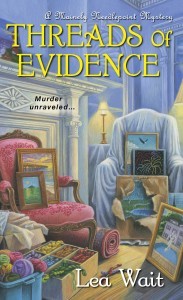
Twisted Threads, the first in the series, got some great reviews and I was pleased with sales. So far pre-orders of Threads of Evidence look good; pre-publication reviews have been great. But until the final numbers are in, an author (and her publisher) don’t really know how many readers a new book will find.
And no matter reviews, sales determine whether a series will continue. I’ve been lucky: based on sales for Twisted Threads and the manuscripts of the first three books in the Mainely Needlepoint series, my publisher has contracted for six books in the series. By the time I’ve completed those six manuscripts, readers’ verdicts on the series will be in. Sales numbers will determine whether Angie Curtis and her friends in Haven Harbor, Maine, will continue solving crimes.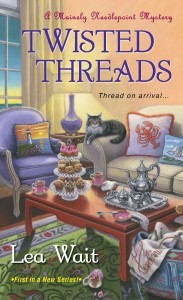
In the meantime, I’ve spent the summer writing the 8th in the Shadows Antique Print mystery series (which won’t be published until September of 2016). The 4th in the Mainely Needlepoint series is due to my editor December 1. So, no. I’m not bored.
Every time I begin a new book I’m excited about the characters and plot I’m putting together. In Threads of Evidence, I combined some of the elements I love in books I choose to read myself: an old, deserted, Victorian house, full of old furniture, art and needlepoint. A mysterious death in the past that is shadowing people today. A small harbor town in Maine with a working waterfront. Neighbors who’ve known each other, and each other’s families, for generations … but may or may not know all their secrets. A few plot twists and turns and surprises.
I’m hoping my readers will enjoy coming with me on that journey.
So — my fingers and toes are crossed. I’ll be sending out notes and postcards to readers on my mailing list. I’ve already written a couple of dozen guest blogs about Threads of Evidence, hoping to reach new readers. My website is updated. (There’s a link to a prequel of Threads of Evidence there.)
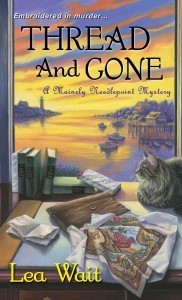 But, after that, like a child who leaves home to seek his or her fortune, Threads of Evidence will be on its own. I hope it finds many friends in many places.
But, after that, like a child who leaves home to seek his or her fortune, Threads of Evidence will be on its own. I hope it finds many friends in many places.
In the meantime, I’ll be starting to prepare promotion for Thread and Gone, the next in the series, which will be published at the end of December. And writing Dangling By a Thread, the book after that.
And wishing Threads of Evidence well in its journey.
August 18, 2015
The Common Herd
Dorothy Cannell: Several years ago I was invited to a drinks and ‘horseydervy” party 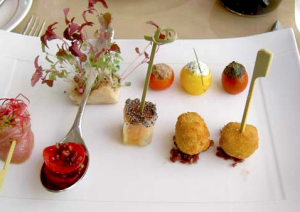 where other than my husband and hostess I didn’t know anyone present. As a result, the latter took me round the room and made introductions. Husband, true to form, merged into a group of men talking about tools and their reverence for Home Depot. During my circling I heard several people say how wonderful it was that – let’s call her ‘Estelle’ – had come. Such a surprise! So rarely did she socialize. Couldn’t afford to take time away from her life’s work.
where other than my husband and hostess I didn’t know anyone present. As a result, the latter took me round the room and made introductions. Husband, true to form, merged into a group of men talking about tools and their reverence for Home Depot. During my circling I heard several people say how wonderful it was that – let’s call her ‘Estelle’ – had come. Such a surprise! So rarely did she socialize. Couldn’t afford to take time away from her life’s work.
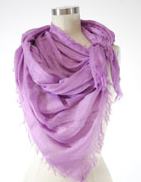 Glances were cast in the direction of woman standing in a corner. I won’t describe her other than to say she was approximately my age and she had that clever way with floaty scarves that I have never managed. I was intrigued and a little intimidated when my hostess brought me up to her. What could this life’s work be? Something scientific, or math related perhaps. Having never grasped how electricity works and having long forgotten how to do fractions, I have always thought people of that turn of mind brilliant beyond belief. It was a shock when my hostess announced after making the introduction that Estelle and I had something in common.
Glances were cast in the direction of woman standing in a corner. I won’t describe her other than to say she was approximately my age and she had that clever way with floaty scarves that I have never managed. I was intrigued and a little intimidated when my hostess brought me up to her. What could this life’s work be? Something scientific, or math related perhaps. Having never grasped how electricity works and having long forgotten how to do fractions, I have always thought people of that turn of mind brilliant beyond belief. It was a shock when my hostess announced after making the introduction that Estelle and I had something in common.
“You both write.”
“Oh! So nice to meet you!” I said on a gulp of relief. This did make things easier. “I’m sorry I didn’t catch your last name. What’s your area?”
“Literary.”
“Dorothy does mysteries,” contributed our hostess.
“Really?” Estelle stared over my head as befitted someone on a higher plane. Understandable, of course! After all … genre fiction! The fact that people read it by the droves only proves how tacky it must be.
“I’m afraid I haven’t heard of you,” she continued, “but then I wouldn‘t have even if you were a name. I haven’t read a novel in years, even of the critically acclaimed sort. I can’t allow another’s prose to cloud my own, to infect my vision … the luminosity that must pervade not only every sentence but every word.”
“Estelle has been working for years on this book,” beamed our hostess, “so it is bound to be incredibly significant when finished and will win all the coveted awards. The Pulitzer, the Booker …”
“I’d rather not say anymore about it,” said Estelle, meeting my eyes for the first time. “I don’t want to sound rude, but I get tired of fending off questions about the concept – I suppose you’d call it the plot.” She could have been speaking to a toad.
I didn’t ask if it was her first. Had to be if it’s her life’s work. I caught sight of my husband 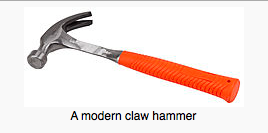 and murmured that I’d better join him before he bored people talking about the fence he was building to keep in the dog. He can go on a bit about ‘Do it yourself’ challenges, but I was suddenly eager to have him enchant me with a monologue on hammers. They make such lovely murder weapons. Everyone has one, so hard to identify if you get the blood off right away. I wondered, as I sped his way, how many people had been tempted to give Estelle a mortal clout to the head. This summer I have thought several times of that encounter with her and I have to say that her isolating herself in her ivory tower, far from the common herd, has grown in appeal.
and murmured that I’d better join him before he bored people talking about the fence he was building to keep in the dog. He can go on a bit about ‘Do it yourself’ challenges, but I was suddenly eager to have him enchant me with a monologue on hammers. They make such lovely murder weapons. Everyone has one, so hard to identify if you get the blood off right away. I wondered, as I sped his way, how many people had been tempted to give Estelle a mortal clout to the head. This summer I have thought several times of that encounter with her and I have to say that her isolating herself in her ivory tower, far from the common herd, has grown in appeal.
I’d be much further ahead with Peril in the Parish if not having spent a lot of time with family and friends, either at home or on excursions around Maine. Perhaps if I’d proclaimed that I was writing a significant book, one certain to set the literary world ablaze – that would have Austen, Dickens and Tolstoy turning in their graves in envy, they would have insisted on my having months … years of alone time with my masterpiece. I do hope Estelle’s was not destined to languish in a drawer until it turned to dust and that she has not come to regret not mingling more with the common herd.
I’ve found there’s a lot of grazing to be done – helpful to propelling my storyline forward when living life at its most wonderfully interrupted.
Dorothy
WHY I WRITE
Vaug hn Hardacker here: Kate Flora’s blog of August 10th hit a note with me. I too had visions of becoming rich at this writing game; then I had my first novel published and my eyes were opened to the reality of the profession.
hn Hardacker here: Kate Flora’s blog of August 10th hit a note with me. I too had visions of becoming rich at this writing game; then I had my first novel published and my eyes were opened to the reality of the profession.
My first shock came when the five or six figure advance I expected was in reality in the low four figures. Unless you have a best seller or two under your belt, the day of the big advance has passed and publishers have become miserly. I suppose if I were a publisher with authors who don’t earn back my advance I’d get miserly too.
My second shock came after the novel was published and I scheduled a whirlwind book tour of Maine. First off, I must say that living in Stockholm and Aroostook County in general makes it tough. The nearest of the chain bookstores is Books A Million in Bangor. I decided to visit the major book stores personally. I met with managers at the BAM stores in Bangor, South Portland, and Auburn. The Assistant Manager in Auburn agreed to a date and the others said they’d get back to me. Result: Auburn called back and said they’d have to reschedule and coordinate with their corporate office and they’d get back to me when they had a date–I’m still awaiting that call. I got no response from Barnes & Noble in Augusta nor the BAM stores in Bangor and South Portland.
Shock number three: I arranged for an appearance at the Caribou Public Library. I thought that since Caribou was my home town I’d get a turn out. Four people showed (2 of whom were members of my writing group) and I sold one (1) book.
Lesson learned: People don’t go to libraries to buy books; they go to borrow them. In fairness, my best turnouts have been at the Jesup Library in Bar Harbor and the Freeport Community Library. Both venues treated me graciously.
I have already blogged about my terrific success at Caribou’s Thursday on Sweden and Maureen Milliken arranged for Lea Wait, her, and me to set up a table at the Maine Artisans Show in Belgrade Lakes. Where we attracted a goodly number of people and sold some books.
So, you ask at this point. If the industry is that tough why do you continue to write?
The answer lies in my history. I grew up in a family–well all I can say is when I watched Father Knows Best, Donna Reed, and Leave It To Beaver I’d look at my parents and ask myself, what’s different here? My parents lived by a simple creedo: Children should be seen and seldom seen. In fact, on those occasions where my younger brother and I were allowed to speak, they didn’t listen (I wonder if someone told them that they had to let us talk, but listening was optional?) In order for me to purge my anger at being stifled, I began writing short stories…on paper no one could tell me what to say–or to shut up.
To this day nothing drives me further up the wall than to be ignored. Heck, I don’t even ask people to agree with me, just listen to what I have to say before discarding it. I’m a writer and writers always have something to say, whether people agree or not.
So here’s the answer: Even if I had never published a single book or short story, I would have kept writing. Why? Because I have to–it’s an integral part of me.
August 16, 2015
WRITER DIES FOR STRAWBERRY PIE
Susan Vaughan here, not dying yet. Maybe I wouldn’t literally die for strawberry pie, but eating the delicious fruit whether au naturel or in a pie is “to die for.” I wrote this post in 2013, but even the weather information applies now. The Maine strawberry season was a little later than usual due to a wet and cool June. The up side of that is the berries had longer to ripen so were larger and sweeter, according to my local produce farmer. And now in August, the ever-bearing berries are ripening.
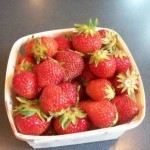 Whenever I eat a berry like strawberries or blueberries, I often wonder about the reaction of the first humans to taste them. Ancient peoples must have sampled all kinds of wild plants that either tasted horrible or made them sick. Imagine the euphoria of biting into a juicy berry like the strawberry. Did they wait awhile to see if it made them sick?
Whenever I eat a berry like strawberries or blueberries, I often wonder about the reaction of the first humans to taste them. Ancient peoples must have sampled all kinds of wild plants that either tasted horrible or made them sick. Imagine the euphoria of biting into a juicy berry like the strawberry. Did they wait awhile to see if it made them sick?
A little research, and I found that strawberries are the only berry with seeds on the outside. They grew wild in Italy as far back as 234 B.C. The strawberry was a symbol for Venus, the Roman goddess of love, because of its heart shape and red color. In Othello, Shakespeare decorated Desdemona’s handkerchief with symbolic strawberries. About the strawberry, William Butler (ca 1600) said, “Doubtless God could have made a better berry, but doubtless God never did.”
And early European settlers in Massachusetts ate strawberries cultivated by local Native Americans, who’d cultivated the berry as early as 1643. Crushed berries were mixed with cornmeal and baked into strawberry bread. Colonists then developed their own version and created strawberry shortcake!
In honor of the strawberry, I’m sharing my strawberry pie recipe. It’s easy and foolproof. Oh, and to die for. Enjoy.
STRAWBERRY PIE
Ingredients: 1 quart strawberries, washed, drained, and hulled, a pre-baked and cooled pie shell, 1 cup sugar, 3 tbsp cornstarch, pinch salt, water
Cover cooked pie shell with the choicest berries. Mash 1/2 to 1 cup of remaining berries. Add enough water to make 1 1/2 cups. Mix sugar, salt and cornstarch together. In saucepan, bring juice mixture to boiling. Gradually stir in sugar mixture and cook over low heat, stirring constantly until boiling. Add drop of red food coloring if desired. Boil one minute. Cool. Pour over berries in the pie shell. Chill about two hours. Serve with whipped cream or ice cream. You can use peaches or other berries or a mix of berries.
If anyone has interesting facts or lore about strawberries, please share!
*** All three books of my Devlin Security Force series are available online, for digital readers and in print. Locally in Maine, the print books will soon be available at the Sherman’s Books & Stationery Stores.
August 14, 2015
Weekend Update: August 15-16, 2015
 Next week at Maine Crime Writers there will be posts by Susan Vaughan (Monday), Vaughn Hardacker (Tuesday), Dorothy Cannell (Wednesday), Lea Wait (Thursday) and Barb Ross (Friday).
Next week at Maine Crime Writers there will be posts by Susan Vaughan (Monday), Vaughn Hardacker (Tuesday), Dorothy Cannell (Wednesday), Lea Wait (Thursday) and Barb Ross (Friday).
In the news department, here’s what’s happening with some of us who blog regularly at Maine Crime Writers:
Lea Wait: Busy week coming up! Monday night, August 17, at 7 pm, I’ll be the latest of the Maine Crime Writers to speak as part of the Maine Writers Series at the Witherle Memorial Library in Castine. Looking forward to visiting Castine again, and seeing my friends at the library there!
Then Wednesday, August 19, my husband and I will be at our MAH Antiques booth in the barn at the Maine Antique Dealers Show at Round Top Farm, business route 1 in Damariscotta, from 9 am until 4 pm. This is the only antiques show we do now, since I’m writing and Bob’s painting full-time, but it’s a great show — about 75 dealers, inside and out — and an opportunity for any of you who’ve wanted to see the prints I write about in the Shadows Antique Print Mystery series, from Winslow Homer’s wood engravings to botanicals, birds, military prints … and whatever I pack Tuesday! (If anyone is interested in a particular category or artist .. . contact me before Tuesday and I’ll be sure to bring what you’re looking for.) I’ll also have copies of my books for sale in our booth.
Then Friday night, August 21, Bob and I will be celebrating another opening featuring Bob’s paintings at the Stable Gallery, Water Street, in Damariscotta, from 4 until 7 pm. The opening is part of Damariscotta’s art walk.
An invitation to readers of this blog: Do you have news relating to Maine, Crime, or Writing? We’d love to hear from you. Just comment below to share.
And a reminder: If your library, school, or organization is looking for a speaker, we are often available to talk about the writing process, research, where we get our ideas, and other mysteries of the business. Contact Kate Flora: mailto: kateflora@gmail.com
August 12, 2015
Wet Feet and Leaky Rowboats, or How Not to Research Your Next Novel
Jen Blood here, very excited to be writing my first official post with Maine Crime Writers. To learn more about who I am and the writing I’ve done, you can check out this interview I did with the inimitable Susan Vaughan back in April of 2013. But I thought to get a real idea of who I am and where I come from, I’d take a few minutes here to talk about the day my dad and I took a leaky rowboat out to research the island on which my Erin Solomon series is based. And nearly drowned.
It was 1998 or ’99 when I was getting the lay of the land while I wrote All the Blue-Eyed Angels, the first novel in the Solomon series. In the book, there’s an alleged cult suicide on an island a few miles from Littlehope, Maine — a town based on a midcoast fishing village called Friendship. Naturally, that meant I needed to find an actual island in the vicinity so that I could get the flora and fauna and general creepy vibe just right. Conveniently enough, Friendship Long Island is less than a mile from the Friendship pier, and seemed to suit my purposes beautifully.
Since I had no boat, however, I decided to ask my dad to give me a hand finding one so that we could go out some afternoon and check out the island. Being the good dad that he is, he agreed.
So, now, a little background on my father: Originally from Massachusetts, my dad is a not-terribly-tall man with a booming voice and a big laugh and a penchant for finding trouble whether he’s looking for it or not. He’s got a good heart, but not a lot of patience for the mundane practicalities of everyday.

Jen with Dad circa 1995, Peaks Island.
I arrived at the Friendship pier at around 8:30 in the morning on the day we were to head over to the island. Somehow I had thought my dad would be able to find an actual boat boat — with a motor, maybe even a cabin. I don’t know where I thought he’d get that boat, but it’s what I’d gotten in my head. Instead, on an overcast morning in June, I showed up to find my old man waiting for me in a leaky rowboat with one life preserver.
“You ready, Jenny? I think this thing’ll float,” said he.
But because I truly am my father’s daughter, and I really did want to get out to that island, I agreed that it looked generally seaworthy… and Friendship Long Island was less than a mile out. What could possibly go wrong?
It was cool and overcast that day, as early June often is in Maine. I had a disposable camera with me, and Dad rowed while I took shots of harbor seals and whitecaps, all the while bailing out the growing pool of water at my feet with a plastic gallon jug.
It was high tide when we reached the island. The fog had lifted and the sun was strong — which was good, because my toes had gone numb after having been submerged in seawater for the full trek out. Neither Dad nor I had thought to bring food. Or water. Or a map. We found a rough trail and I continued to take pictures, plotting in my mind where the Payson Church might have stood, or what the wind might have been like on the day it burned to the ground.
Friendship Long Island is about three miles long — a lot of that rough terrain and thick brush, especially back in ’99. I honestly remember very little of the island itself. I know that we came upon a house at one point, and Dad knocked on the door and someone let us in. I remember in a hazy sort of way that I asked some questions about the island and whoever we came across answered and my father beamed because I was a Writer and we were Researchers, doing what Researchers do. I remember picking berries. I remember getting a sunburn. And then, I remember that the clouds had returned and the winds had picked up and we needed to get going if we ever hoped to make it back to the mainland.
We set out.
In case you’re not familiar with the open seas, a rowboat on the ocean isn’t the ideal way to travel, at least not to my way of thinking. For one thing, rowboats are cumbersome beasts – tough to topple, true, but they make any trek in rough water a slog. When you’re in a rowboat on rough water and the seas are getting dark and the skies are getting darker and, for all intents and purposes, there is a hole in the bottom of your boat, that slog becomes downright menacing.
By the time we were about three quarters of the way back to the mainland, we’d taken on way more water than I could feasibly bail out. My legs were submerged to the knees, as were Dad’s. It started to rain.
“You think anybody else has adventures like us?” I remember my father asking me then. My teeth were chattering. I was fairly sure we’d have to swim if we ever wanted to hit dry land again. My disposable camera had fallen in the water at some point in the journey, and the film ultimately proved unusable. I shook my head.
“I’m pretty sure anybody else would’ve had the sense to get a bigger boat.”
He laughed – that big, booming laugh that should come from a much larger man. “That’d make for a boring story, don’t you think?” he said.
Seventeen years later, I usually remember things like water and snacks and an extra pair of dry socks when I’m headed into the wild blue. I don’t go out in the open ocean in leaky rowboats. My dad is 71. He’s hard of hearing. He has high blood pressure, and COPD from a lifetime of smoking two packs a day — a habit he kicked a couple of years ago. He, too, tends to avoid leaky rowboats these days. The value he’s always placed on a good story, however, continues to stick with me. Given the choice between that and dry feet, I still think I’d have to pick the story.
August 11, 2015
Making Writing Space
What happens to me when I cross the Piscataqua and plunge rapidly into Maine at a cost of seventy-five cents in tolls? I cannot describe it. I do not ordinarily spy a partridge in a pear tree, or three French hens, but I do have the sensation of having received a gift from a true love. And when, five hours later, I dip down across the Narramissic and look back at the tiny town of Orland, the white spire of its church against the pale-red sky stirs me in a way that Chartres could never do.”—E.B. White, Home-Coming, 1955
I am lucky enough to live in Maine all the time and don’t have to cross the Piscataqua to make a pilgrimage to Allen Cove in Brooklin, Maine, where the incomparable E.B. White lived and wrote for so many years.

E.B. White
But just as he did on his long rides from away, I feel a delicious anticipation when crossing the Narramissic River in the Hancock County town of Orland. From there it’s less than a half hour to the shore of Allen Cove, where I also lived once upon a time. My period of residence began eight years after the 1985 death of the famed essayist, author and authority on writerly style.

The gravestones of two amazing writers, Katharine and E.B White, in the Brooklin cemetery
In the mid-90s I lived in a rented cottage on the south side of E.B. and Katharine White’s former hayfield, across the road from their old saltwater farm. Though I had turned in my journalist’s badge by then, I still thought of myself as a writer, self-identity being a fairly fixed thing by the time you’re thirty-something. I was a recent law school grad, and had yet to realize that the legal and literate sides of my brain could sing—or at least hum—in harmony. Though the writer part of me was in a fallow period, I thought a lot about the man who used to live across the road. I bought and read as much of his work as I could find. (I later discovered Katharine White’s work, which is a blog post for another day.)
The summer folks who had bought the Whites’ farm urged me to hike around on the farm throughout the winter, and even loaned me a pair of snowshoes for that purpose. Without the smell of humans on the land, the deer would decimate the orchard, they said, so tromp around to your heart’s content. That’s how the Whites’ former place became mine to ramble during the cold weather months 20 years ago.
I was especially drawn to the converted boathouse on the shore of Allen Cove where E.B. White wrote. I spent considerable time peering through the window of his former writing space, studying its spare beauty.
Here’s how he described it:
The house in which I sit this morning was built to accommodate a boat, not a man, but by long experience I have learned that in most respects it shelters me better than the larger dwelling where my bed is, and which, by design, is a manhouse, not a boathouse. Here in the boathouse I am a wilder and, it would appear, a healthier man, by a safe margin. I have a chair, a bench, a table, and I can walk into the water if I tire of the land . . . A mouse and a squirrel share the house with me. The building is, in fact, a multiple dwelling, a semidetached affair. It is because I am semidetached while here that I find it possible to transact this private business with the fewest obstacles.—E.B. White, A Slight Sound At Evening, 1954.
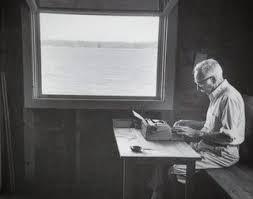
Semidetached in the boathouse
My visits to his former coveside writing space occurred at a time when I was unable to achieve the semidetachment necessary to make up my own stories. Yet I yearned for a physical and mental writing space of my own, on the shore of Allen Cove or any other shore for that matter. I was learning to be a lawyer in rural Maine, but my new profession still felt like playacting, and part of me wanted to be offstage, writing the lines.
Two decades later I have figured out that I’m capable of doing both. I am a lawyer and a crime writer. My writing space is nothing like the boathouse into which I peeked on those cold afternoons on the shore of Allen Cove. But like White, I write every day, and feel as though I’ve received a gift when I cross that little river on the journey back to Brooklin.

A blueberry pie is always a gift
This year, two days after I delivered the manuscript for my third Joe Gale mystery, we pointed the car north and east and yelped with joy when we crossed the Narramissic. We only had a week, but boy, did we make the most of it in a modest rented cottage around Allen Cove from the Whites’ place.

Allen Cove at sunset, August, 2015
We ate lots of blueberry pie. Took looooong swims in the cove when the tide was high. Hiked through hushed woodlands. Ate more pie. Sat in awe of sunsets that went on for an hour. Watched a gang of greater yellowlegs dance along the shore. Listened for the nightly hermit thrush serenade while doing the supper dishes. Slept with the windows wide open to welcome the cool night breeze off the water. Ate still more pie.

A greater yellowlegs sashaying along the shoreline
And every now and then I picked up the binoculars and reconnoitered the shoreline of the cove until E.B. White’s little boathouse came into focus, still standing for the proposition that every writer needs to find their own space to write.
Brenda Buchanan is as happy as a clam at high tide to be attending the Murder By The Book conference at Jesup Memorial Library in Bar Harbor on September 18-19. Any excuse to cross the Narramissic . . .
Lea Wait's Blog
- Lea Wait's profile
- 509 followers




